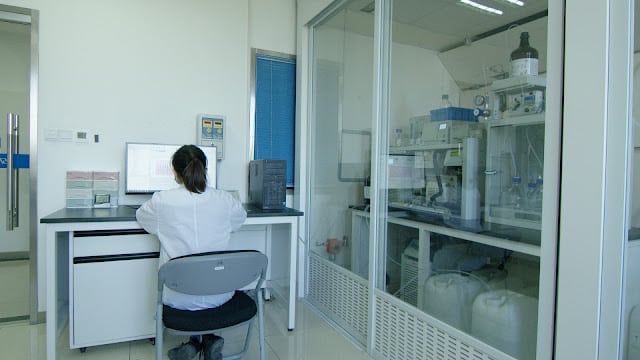Six Directions of Chemical Synthesis Drug Research and Development

As an important part of the development of the pharmaceutical industry, chemically synthesized drugs are the main source of drug candidates, as well as a high-input, high-output and high-efficiency work. The main directions for chemical synthesis drug research and development are as follows.
Medicilon can undertake the synthesis of special reagents, intermediates and molecular fragments, preparation of standard products, synthesis design and preparation of impurities or metabolites, synthesis of stable isotope internal standards and synthesis of tritiated compounds.
Research and Develop New Chemical Entity Drugs
New Chemical Entities (NCE) drugs refer to newly discovered drugs with new chemical structures, creating “NCE” new drugs. The research and development of breakthrough new drugs is guided by the latest medical theories, based on the principles of modern new drug design, and uses structure-activity relationships, analytical methods, and computer-aided drug design to synthesize a batch of new compounds, from which lead compounds with the expected activity are screened. Then the structure is optimized and modified, and the research finds the NCE that can finally be developed into a breakthrough new drug. As a series of products of various major categories of chemically synthesized drugs are successively marketed, the speed of discovering new drug monomer compounds is slowing down, and research and development costs are getting higher and higher. Among the new products on the market in recent years, anti-infective drugs, cardiovascular drugs, central nervous system drugs and anti-cancer drugs dominate.
Medicilon provides new drug research and development outsourcing services, and has established a company in Shanghai that integrates compound synthesis, compound activity screening, structural biology, pharmacodynamic evaluation, pharmacokinetic evaluation, toxicological evaluation, formulation research and new drug registration. A comprehensive technical service platform of international standards, and has been recognized by the international drug administration.
Create “Me-Too” New Drug-Research and Development of Imitation New Drugs
The imitative innovation of new drugs (Me-too) refers to the use of the research results of the mechanism of action and structure-activity relationship of known drugs, without infringing on the patents of others, to carry out molecular modifications based on the analysis of the chemical structure of the known drugs. Design and synthesize the drug’s derivatives, structural analogs and structure-related compounds, and through systematic pharmacological research, a new drug research and development method for the purpose of generating new drugs, and the new drugs produced are compared with known drugs. It has the characteristics of high activity or similar activity. Because the research and development funds and risks of the new compound (NCE) are very high, most companies have chosen the “Me-too” drug research and development path. The main methods of the Me-too strategy in the research and development of new drugs include the application of bioelectronic isostere replacement, prodrug design, and chiral drug research.
Further Research and Development of Known Drugs
Extensive new drug research and development is a common way to modify or transform known drugs (including the effective ingredients of medicinal plants), and create new drugs with stronger specificity, higher efficacy or better safety. Continue research on existing drugs (drugs with expired patents of individual companies) and make more ideal derivatives or precursors (such as better physical and chemical properties, higher bioavailability, or targeting, etc.). Pay attention to.
Pharmaceutics Research and Development of Existing Drugs
The development of new formulations is to carry out pharmacy research and development on the basis of affirmative curative effect, such as the application of new pharmaceutical excipients or new formulation technologies, research and development aimed at improving the quality of treatment, especially new formulations with improved bioavailability, or design, The development of new dosage forms and compound preparations, etc., can not only be easier to approve, but also help extend the patent protection period of the original product. It is a new product research and development work with low investment, low risk, and possibly excellent economic benefits. In recent years It has been valued by all pharmaceutical companies, and some have achieved great success.
Research on New Uses of Existing Drugs
Development of drugs with new indications The discovery of new uses of drugs is actually the discovery of new indications for the treatment of certain drugs in addition to the original treatment of conventional diseases. New use of drugs is an important direction of new drug research and development, and it is also a very active field in current clinical pharmacy with rapid development. New uses of drugs are generally found in the pharmacological research phase of drugs (including clinical and non-clinical), and even some new indications for drug treatment are directly based on the information feedback of doctors or patients. The study of drug pharmacological mechanisms is the fundamental way to discover new uses of drugs. one.
To Circumvent Patented Processes
Applying modern new technology to research the production process of products to avoid patent technology “Avoiding patent technology” means that the production process of chemical raw materials is included in the production process of pharmaceuticals, avoiding the production process routes listed in the patent scope of the original research enterprise, and adopting Innovative processes other than patents produce the same APIs. For example, the research and development of the domestically produced “Tamiflu” or “Military Coover” has adopted a method of avoiding patented technology. Although “Junkeaowei” is an imitation of “Tamiflu”, it has adopted the strategy of “imitation first and then invented” and innovated in production process and dosage form, thus obtaining independent intellectual property rights. “Junkeowei” has also become the world’s first approved non-azide route to produce oseltamivir phosphate.
At present, chemically synthesized drugs are still relatively effective, commonly used, and a large number of important therapeutic drugs. They are also the subject of drug research and development of major pharmaceutical research and development companies, and they have good development prospects.
